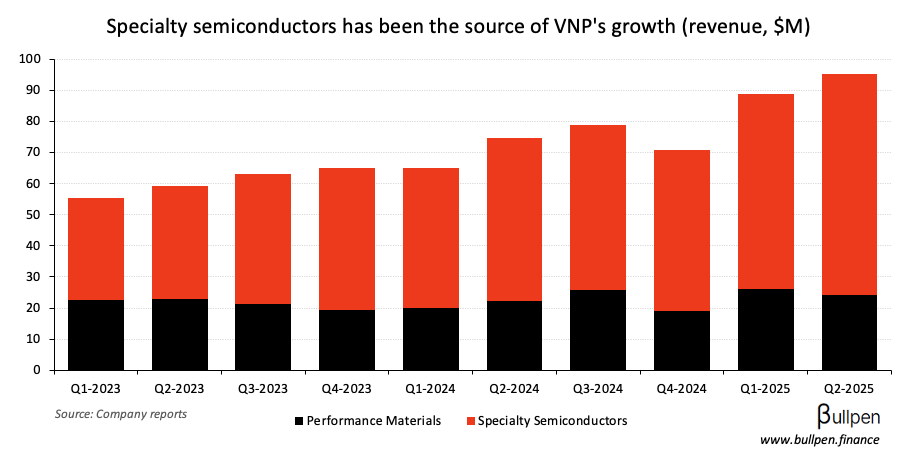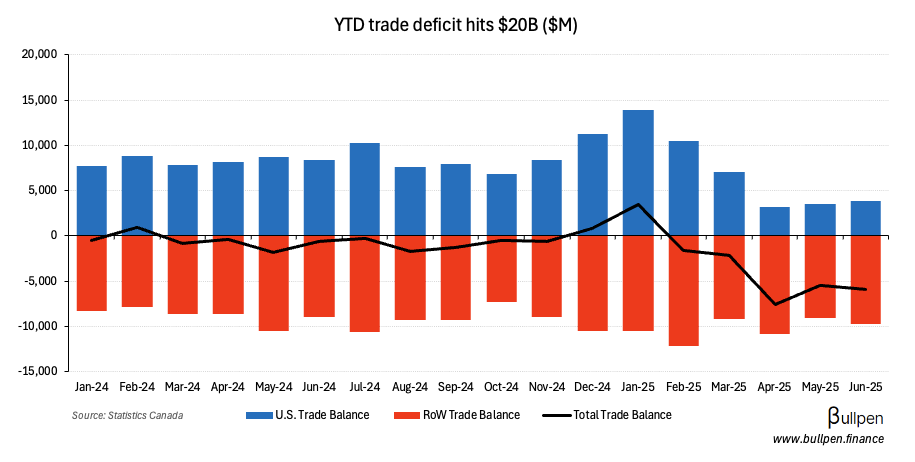Turnaround Story: Lots of Upside if AQN can Stick the Landing
On Friday, Algonquin announced interim CEO Chris Huskilson would be moving back to the board in early March and handing the reins over to Rod West, former group president of Entergy’s utility business.
The market liked the news, pushing AQN shares 3.5% higher to close out the week, but it’s been a challenging few years for the company following the collapse of an unsustainable business model.

With a major overhaul of the business well underway, we think there is a compelling case to be made for AQN as a low risk, high upside opportunity for the patient investor.
What went wrong with Algonquin’s model?
Until recently, Algonquin was a fan favourite in Canada, largely due to its unique business model. The company grew and operated two distinct segments - a regulated utility business (water, gas, electric) and an unregulated renewable power business.

A stable utility business with growth upside from renewable power production - an easy story for the market to fall in love with, and the reason why the stock ultimately collapsed.
To understand how, a quick explanation on how the two business models are funded:
Regulated Utility: will typically fund its operations via 50% debt and 50% equity (give or take 10%). These capital structures are usually enforced by regulators to ensure utilities don’t find themselves in financial distress and unable to meet the essential needs of their customers.
Renewable Generation: can carry much higher debt loads (60-80% of total cost) because they are financed at the project level and sign long-term offtake agreements.
Do you see the problem? As the renewable business grows, it does so with a higher portion of debt versus what’s allowed at the regulated utility. Leverage rises, making growing the utility business more capital intensive. Growth in one business chokes out growth in the other.

In an easy financing environment, excess leverage could be funded by tapping equity markets, which AQN did religiously.

But when rates jumped and financing conditions tightened in 2022, the company found itself with a more expensive interest bill and an inability to finance it through public markets, leading to a reduction in full-year guidance and a quick 30% drop in AQN shares.
With the kitchen sink gone, AQN is rebuilding
Today, AQN looks different. While it’s not out of the woods yet, it appears to be making progress in its transition towards a pure-play regulated utility model.
Terminated its $2.6B Kentucky Power acquisition
Shuffled key management and board positions
Cut the dividend by >60% from peak to a more sustainable level
Sold off the bulk of its renewable business in two transactions, netting the company ~$3.5B to pay down debt and fortify the balance sheet
Management has had a distinct tone shift towards the way they allocate capital, focusing on long-term internal equity generation over the short-term improvement of metrics.
First, as we continue to say, we’re committed to the investment-grade rating. We intend to use proceeds to maintain flexibility. We want to be self-funding. That is the bigger priority. We certainly don’t want to do a buyback and go back to the market after that. I will say that the amount of flexibility we have is dependent on getting the regulatory lag lower. Obviously, there’s earnings and FFO that’s created by those rate cases.
As Darren highlighted in the quote above, optimizing the existing regulated business is the core focus of the company today. In AQN’s case, it has identified $1B of assets (rate base) that are serving customers but are not currently reflected in rates (the return the regulator allows the company to earn).
To fix this, you file a rate case in court asking for a high number, the regulator approves a lower number, and everyone goes home happy. As of Q3, AQN had nearly $200M of pending rate requests and more to be filed in 2025.

Source: Company reports
These requests typically take around a year or two to reach a resolution, so we should start to see some impact in 2026 and get the full impact by 2027, making 2025 the trough earnings year for the company.
Once its asset base is optimized, AQN should look to deploy capital into sustainable long-term growth.
Where else could value be unlocked?
Optimizing its existing footprint isn’t the only potential catalyst for AQN.
Absent from its renewable sale was its 123 MW hydro portfolio, which the company is likely to sell for a good price given that it’s on solid footing now.
It’s important to note that the hydro business represents an annual EBITDA of approximately $25 million, and we intend to only enter into a transaction if it creates value for shareholders.
We think the number could be >$350M, given the premium hydro maintains over other renewable energy sources due to its stability and longevity.
The company could divest from some of its smaller non-core utilities as well, reducing complexity and tightening focus on its most productive assets. Activist investor Starboard highlighted the water utility assets as a possible sale candidate, if the stock doesn’t begin to trade in-line with its regulated utility peers.
In the case of any asset sales, proceeds could be used on new CapEx or share buybacks, something we believe the market would look positively to.
Framing the upside (and downside)
So what is this thing worth?
The million dollar question! Given the potential for the business to be stripped down, we decided it would be worthwhile to look at AQN through a sum of parts analysis to frame the upside case.
We looked at AQN’s electric and gas utility peers, which trade at 1.8x their allowed rate base, on average.

We apply the same multiple to AQN’s electric and gas rate base, give its water assets a slight premium to that multiple at 1.9x (water trades at a premium), and give its hydro assets a 14x TTM EBITDA multiple.
With these estimates, we arrive at an implied valuation above US$6.60/sh.

Using a sum of parts is one way to think about the value of the underlying business, but to get comfortable we looked at a couple more rough measures.
Management said the following about the earnings potential of its existing asset base:
With regards to our newly reduced dividend, we see our revised dividend payout as roughly 60 % to 70% of our optimized core regulated earnings power on our current assets.
Let’s take the midpoint at a 65% payout - with an annual dividend of $0.26/sh, you’d be looking at $0.40/sh based on that comment. Applying the group average NTM P/E multiple of 17x to that figure gets you to roughly US$6.80/sh.

On a dividend yield basis (utilities trade like bonds), AQN’s 5.9% sits well above peers at 3.4%. While not a perfect measure, if the company can rebuild investor confidence and close that gap, you’d be looking at US$7.60/sh.
Attractive turnaround story, but not without risks
At today’s exchange rate, you’re looking at roughly C$10/sh if Algonquin can stick the landing on its turnaround, or ~50% upside from current prices.
But that’s a big IF.
The departure of CFO Darren Myers announced earlier in the year is a bit worrisome, though we’d note he’s jumped around a bit (stepping into his 4th public company CFO role).
For the patient investor, we think this is a story that has limited downside at this point in the narrative cycle. If it can string together a few more wins there’s a lot of room from current prices, and an attractive 6% dividend yield while you wait.
Get smarter on Canadian markets
Get our insight-packed coverage of Canadian markets delivered to your inbox 3x per week in 5 minutes or less.
Get smarter on Canadian markets
Get The Morning Meeting, our insight-packed Canadian markets newsletter delivered to your inbox 3x per week in 5 minutes or less.
Read by 1,000+ professionals from:

